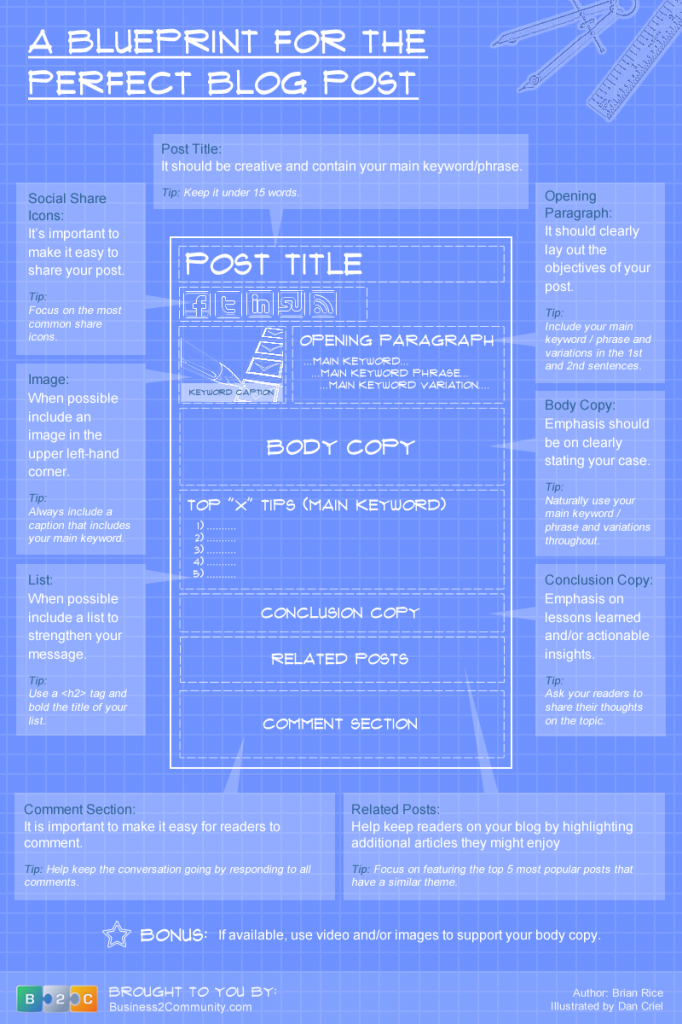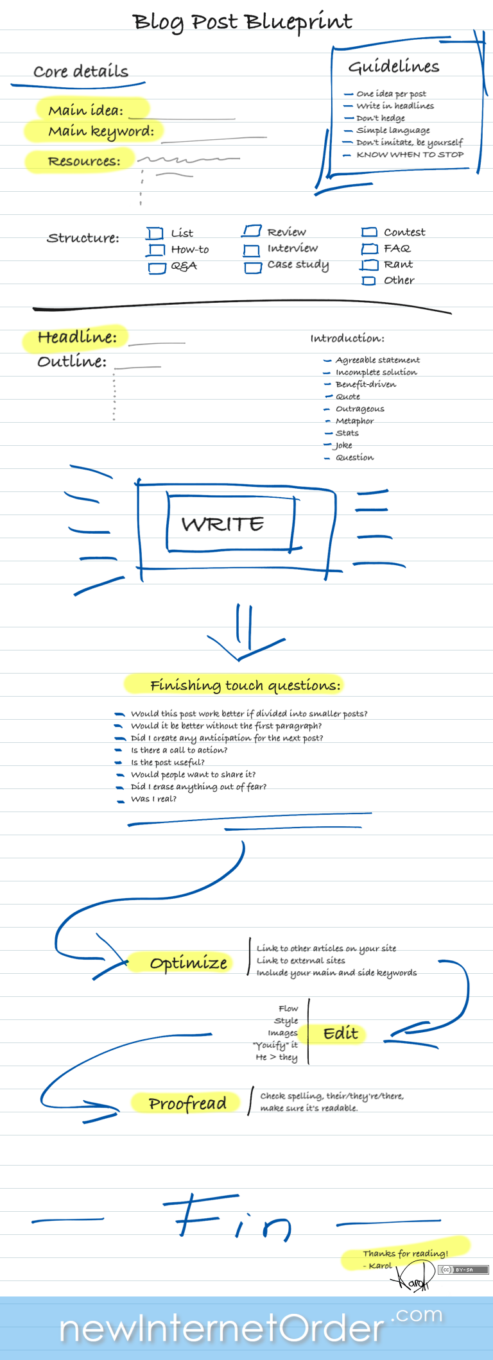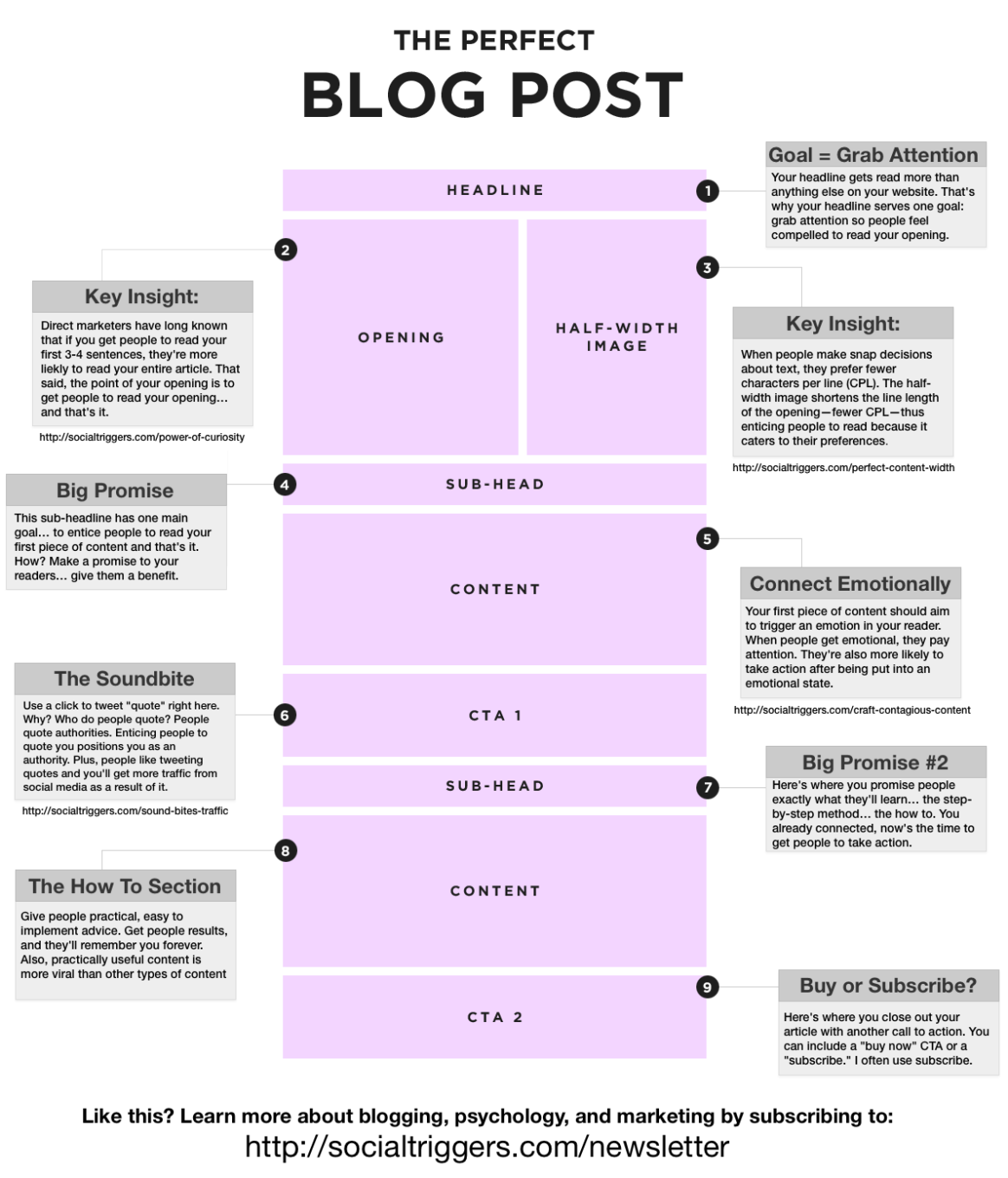
Setting up a new blog is easy…
Creating epic content… Not so much!
If you’re struggling to create blog posts that generate traffic, leads, sales and commissions, then look no further than today’s article.
Because in this post, I’ve put together this list of the best blog post templates, layouts, frameworks and formulas that you can use to turn every blog post into a winner.
Many of these proven templates have been used by many successful bloggers over the years, and they swear by them.
So whether you’re stuck on your first blog post or 50th, these blog post templates will sure point you in the right direction.
Let’s get started.
Table of Contents
1. The PPP Formula
In this article, Brian Dean of Backlinko shares his strategy for writing epic introductions.
The whole blog post will help you write a great piece of content but this formula for writing intros is super effective.
He calls it the PPP Formula, which stands for: Preview, Proof, Preview.
First you tell the reader what to expect in your post, then you hit them with some proof that you can deliver what you promised and finally you share another preview but this time with something real specific.
Head over to Brian’s post to learn more about the PPP Formula and see some examples too.
2. The PSST Framework
PSST stands for Premise, Story, Subheads and Takeaway.
Here’s how Shaunta Grimes uses the PSST framework to easily write great blog posts and more often.
The Premise is the idea and intention behind the article, written out as a “work-in-progress” title so that when you come back to it in the future, you know exactly what you had in mind for the post.
You start the post with a Story, long or short but you share something about yourself that relates to the post you’re writing to build trust with your audience.
Then you will want to write a list of Subheads, or an outline of points you want to hit in the post. This makes it easier to break down the article and what you want to include in it.
Lastly, your Takeaway is what you want your reader to know or understand about the post they have just read. It can be a clear takeaway like a specific call to action or slightly esoteric whereby showing sympathy of what the reader might be going through.
3. The 4-Point Content Framework
This content framework by Neil Patel is all about hooking your reader and increasing their time on site, and we all know what happens when readers spend more time reading our content… More trust, more leads, more sales and higher rankings.
Let’s see how this works by breaking each point down.
Point 1 is all about the headline. Getting this bit right is key as it needs to hook the reader in to even get them reading the article.
Point 2 is breaking your content up with images, sub-headlines and videos. Why?
Because visitors don’t read articles word-by-word and instead scan down the page taking in smaller sections at a time.
If a blog post is broken up well with epic formatting then your readers will scan for longer, essentially keeping them on-site longer than if your article was just a big block of text.
Point 3 is all about getting good at telling stories. The truth is, just listing tactics and strategies alone isn’t enough.
You’ve gotta make your writing more compelling so your reader remains hooked throughout the post. Add in a story within the context of your posts intention, and you’re onto a winner.
Point 4 is about polishing up the final draft. You can hire an editor or use apps to clean things up, correct typos and grammar or even make it interactive to increase engagement.
Hit all four of these points and you’ve got a home run.
4. “Crank n’ Bank” Content Strategy
When I heard about this strategy last year, it was like music to my ears, because I had already been doing it myself with some positive results.
The idea behind it is simple. Crank out as much content as humanly possible in the shortest amount of time. The content isn’t perfect, and it isn’t going to rank number one in Google.
But, overtime, you will notice which posts take off better than others and then you can go back and spend more time on the winners.
This strategy, by Jon Dykstra over at Fat Stacks Blog works well if you’re good at technical on-page SEO. You’re essentially getting the keywords and URL’s “banked” in the SERPS, letting them know what your site is about through a lot of content linking to each other and relevancy.
Once you know which articles are getting the most traction, these can be your best pieces in that topic.
Give the crank and bank strategy a go and see if you can find some fast winners.
5. The Perfect Blog Post
The next one on my list is an infographic made by Derek Halpern of Social Triggers.
Take a look below:
This infographic gives us a visual representation of the entire blog post layout. For the visual learners like myself, this is so very valuable because it helps us picture exactly where the text goes and what to include. Could it actually be the perfect blog post template?
6. SEO Copywriting Writing System
I love this strategy by Perrin Carrell who once wrote for Authority Hacker. Now he runs his own SEO agency at Ranq.
This is an in-depth system explained in simple terms on how to become an SEO copywriting ninja.
Broken down into three parts, it consists of learning the fundamentals of SEO, how to write better and faster, casting a net of content sources for research and overcoming mental blocks like insecurities about your writing and getting over perfectionism (something I struggled with for years).
Give this guide a good read and master the art of writing excellent SEO content.
7. SEO Optimized Affiliate Review Posts
This is the first and only video in this list, and for good reason, it’s fantastic!
In this guide, you will learn how to create epic review content for your affiliate site.
Miles Beckler doesn’t leave anything out in this step-by-step tutorial, so if you’re in the affiliate marketing space then you should watch this video from start to finish.
This is how the pros get their review articles ranking in the serps, build trust with their audience and increase conversions.
Give the video a watch below.
8. The Parts of an Effective Blog Post
Here’s another infographic and this one is by Regina Anaejionu over at ByRegina.com. These types of templates really do help visualise the final product.
This process is broken down into many smaller steps which Regina breaks down in the blog post. I really like how detailed this system is.
It makes thinking about writing great content less daunting and the visual infographic helps you break down the process in your mind.
9. The Simple 5 Step Template
The reason why this next blog post template is so effective is due to its simplicity, and ‘Simple’ is in the title.
The five steps by Joe Bunting are as follows:
- Identify the Problem
- Make the Problem Personal
- Tell a Solution Story
- Solve the Problem
- Call Your Readers to Action
Identifying the Problem to get the reader’s attention and Make the Problem Personal is summed up perfectly in this quote “No tears in the writer, no tears in the reader. No surprise for the writer, no surprise for the reader.”
Tell a Solution Story conveys how you discovered the solution and Solve the Problem explains to the reader how to actually solve the problem.
Lastly, you Call Your Readers to Action by telling them to take action on the solution.
Many of us know what we need to do, but we never give ourselves permission to take action on it, so give your reader the solution and then give them permission to go ahead with it.
10. The Blueprint for the Perfect Blog Post
By now, you’ll know how much I like infographics and this next one is no exception. Put together by Brian Rice from business2community.com, this detailed blueprint includes the most important aspects of an effective blog post.

The post from brian’s blog no longer exists, but you can understand the main concept from the infographic above.
11. 6-Step Writing Process to Blog More and Stress Less
This 6-Step Writing Process by Jeff Bulas promises to take the stress away from your writing process. The whole process involves breaking it down into smaller components, creating a checklist and making the process repeatable.
There’s a fair amount of planning involved which makes writing your blog posts less overwhelming. Check out Jeff’s writing template and the 6 steps here and start making your blog post process an enjoyable one.
12. Templates for Quick and Easy Content Creation
This post is slightly different in that it outlines 12 different templates to use depending on the type of information you want to present.
Whether your article is a list post, interview, how to or product review, there is a template for it that makes the process very simple.
My favorites in this list are the list post, book review and the how-to post.
Check out all 12 templates in this comprehensive Quick Sprout article.
13. Blog Post Blueprint
This Blog Post Blueprint created by Karen K. over at New Internet Order is his favorite way for writing blog posts. He also claims it can help other bloggers who are struggling with writer’s block.
He outlines the process in this blog post and also created it into an infographic, and we all know how much I love infographics so I just had to add it to this list.
Check it out:

15 More Blog Post Templates to Consider
The following list are other great examples of blog post templates and frameworks you can use to crank out awesome blog content in record time. No more pondering about what to write or where to start.
14. A Blog Post Framework That Works Every Time
15. A 5-Part Blog Post Framework That You Should Steal
16. The Foolproof Formula for Writing a Solid Blog Post [Template]
17. A Blog Post to Help You Write Blog Posts [+5 Free Blogging Templates]
18. 3 Great Blog Post Structures You Can Use Today
19. How to Write an Awesome Blog Post in 5 Steps
20. The Content Rules Easy-Peasy Blog Post Template
21. The Ultimate Guide to Writing Blog Posts That Rank in Google’s Top 10
22. How to Write the Perfect Blog Post + Free Blog Post Template
23. The 5-Step Template for Writing Amazing Blog Posts
24. Anatomy of an Effective Blog Post
25. The 8-Step Formula for Writing an Amazing Blog Article in 60 Minutes
27. A Fool-Proof Formula for Easily Creating Compelling Content
28. How to Write a Blog Post
29. How To Build The Perfect Blog Post Blueprint
Many of these are similar to others on this list but present them in slightly different angles. It’s important to note that there isn’t one that’s better than the rest.
In fact, I highly recommend experimenting with a few different blog post types and templates that feel right for your intended use.
You’ll eventually refine your process of writing blog content into your own system that works best for you and that you can rely on every time.
Conclusion
There are many different ways to structure blog posts and using a template, blueprint or framework makes this process super repeatable and provides less friction.
Once you’ve found a solid framework that feels right for you, the blog writing process will flow like pen on paper and make your blogging strategy much more productive.
Now, which of these blog post templates or frameworks are you going to try next?
Let me know in the comments below.


I have been reading posts regarding this topic and this post is one of the most interesting and informative one I have read. Thank you for this!